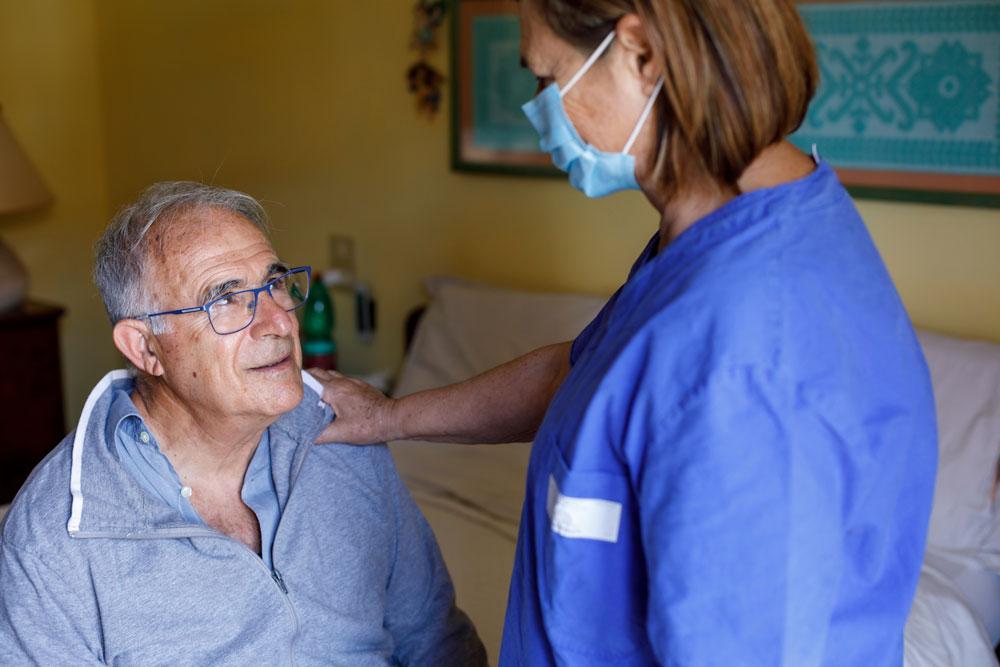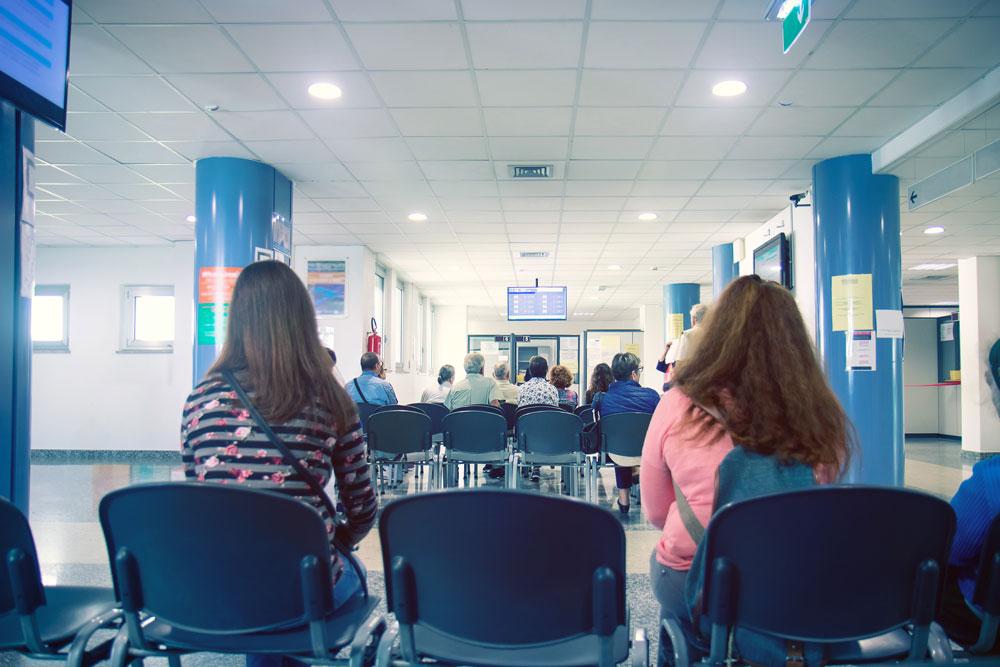Following the formation of a Labour government in July, Wes Streeting, the new secretary of state for health and social care, commissioned the peer and former surgeon Lord Ara Darzi to lead an independent investigation into the NHS in England. The report, published in September 2024, shed light into the “critical” state of the NHS, and shaped the government’s later allocation of funding towards health and social care in the Autumn Budget. HB takes a look at how this money is to be spent
The state of the NHS estate
In his independent investigation of the NHS in England, Lord Darzi refers to the NHS as in “critical condition” in his detailed outlined of the challenges facing the NHS and its subsequent, often subpar, performance. Over a decade of severe austerity and public spending cuts, the NHS has been “starved of funding”, with a backlog maintenance bill of over £13.8 billion, a £37 billion shortfall, and productivity flagging. The effect of inadequate investment is palpable: the waiting list for elective treatment stood at 7.6 million in June 2024, and ten per cent of A&E waits are longer than 12 hours. Lord Darzi’s report highlights the best courses of action for future funding and the forthcoming 10-Year Health Plan, which the government built into its Plan for Change and the Autumn Budget 2024.
The Autumn 2024 Budget
Rachel Reeves’ first budget as Chancellor was the biggest tax-raising budget since 1993, and set aside huge increases in public sector investment. The Department for Health and Social care received an extra £22.6 billion for 2025-26 spending, bringing up the total to £214.10 billion, and providing the highest growth rate (four per cent) since before 2010, excluding COVID-19 pandemic years. Of this, NHS England’s budget is set to increase from £171 billion in 2023-24 to £192 billion in 2025-26, and the capital budget is set to rise to over £13 billion next year, 80 per cent more than pre-pandemic spending (2028-19) in real terms. This is a particularly welcome investment as a report from the Institute for Government identified that the capital budget is often not spent effectively or in full, and has routinely been raided to plug day-to-day running costs, leading to a crumbling estate in dire need of upgrades.
Six months into governance and three months since the Autumn Budget, Labour have started to rollout their fiscal policies and changes to healthcare, but progress remains slow for plans that span up to decades to fully realise. With their Spending Review set to be published in the coming March, we take a look at where the Health and Social Budget has been delegated and what the government have already implemented.
Waiting lists
Waiting lists for elective care have skyrocketed, with the record being 7.77 million in November 2023 compared to 2.4 million in 2010. In 2010, 200,000 people waited more than 18 weeks for care, with 20,000 of these waiting a year. By June 2024, over 300,000 people had waited over a year, which is 15 times as many. As it stands, one in nine people across England are on a waiting list.
In 2010, 94 per cent of people attending a type one or type two A&E were seen within four hours, but by May 2024, this figure had dropped to just over 60 per cent. In 2023, more than 100,000 infants waited more than six hours in A&E, and ten per cent of all patients were waiting for 12 hours or more. The Royal College of Emergency Medicine has estimated that these long waits for emergency care cause 14,000 deaths every year, more than double all of the British armed forces’ combat deaths since the NHS was founded in 1948.
The NHS constitutional right to care within 18 weeks from a GP referral was established in 2010, but the target has never been met, and it has clearly only gotten worse. The government have since reiterated the NHS pledge that 92 per cent of patients should start consultant-led treatment within 18 weeks, and bolstered this with additional funding to deliver an extra two million NHS operations, scans, and appointments. This averages to 40,000 extra appointments a week across England. £1.5 billion has been earmarked for over 30,000 NHS procedures, 1.25 million diagnostic tests, as well as new beds.
Another key part of reducing waiting lists is investment in surgical hubs, which are designated for elective care, and are protected from being used for emergency treatment, reducing waiting times for both departments. Research by the Health Foundation has found that in their first year, trusts in England with surgical hubs carried out 21.9 per cent more high-volume, low-complexity elective surgeries than they would have without a hub, amounting to around 29,000 more procedures.
£70 million will also go towards new radiotherapy machines for cancer treatment, which will be welcomed following Darzi’s findings that only around 60 per cent of genomic tests are being completed on time. More than 30 per cent of patients are waiting longer than 31 days for radical radiotherapy, and so more machines should help to streamline cancer treatment processes.
Maintenance backlog and RAAC
The 2023-24 Estates Returns Information Collection (ERIC) shows that the total cost to run the NHS estate is £13.6 billion, and yet the cost the eradicate maintenance backlog tops it by £0.2 billion. Maintenance backlog is the estimated cost of bringing NHS estates or buildings back to a minimum expected standard, and many necessary renovations have been put off due to focusing on eradicating dangerous reinforced autoclaved aerated concrete (RAAC).
With 90 per cent of the NHS budget going towards day-to-day costs, the capital budget necessary to get the NHS estate back up to standard has remained flat at around £5 billion, a decrease in real-terms. Lord Darzi described the NHS as suffering from “capital starvation”, with Charlotte Wickens from The King’s Fund drawing attention to: “the neglect of the NHS estate led to 751 incidents to patients and staff, such as through equipment failures or infection outbreaks.” In 2022-23, 13 hospitals each day were disrupted by failing or crumbling buildings.
The Autumn Budget puts £1 billion towards reducing the backlog of critical NHS maintenance, repairs, and upgrades, as well as £102 million towards upgrading dilapidated GP surgeries; 20 per cent of GP buildings are older than the NHS itself. A recent announcement in January 2025 saw the government reevaluating and committing to a revised New Hospital Programme, since its announcement under the previous government in May 2023 where £20 billion was pledged but never delivered. The government’s review of the scheme will deliver £15 billion of new investment over five consecutive years, starting with hospitals constructed using RAAC until 2030, and then moving onto deliver the rest of the 40 new hospitals promised.
Health and social care
Around 70 per cent of local authority spending goes towards treading water in adult and children’s social care provision, so the Budget’s £1.3 billion extra for local authorities this year was much appreciated. This included £600 million ringfenced exclusively for social care. Better social care keeps people out of hospitals and prevents illnesses and injuries before they happen, taking the pressure off secondary healthcare facilities. A further £86 million has been earmarked to increase the Disabled Facilities Grant which will support 7,800 more adaptions to homes for those with social care needs, again reducing hospitalisations and promoting community-based care.
From April 2025, the carer’s allowance will increase its weekly payout from £151 to the equivalent of 16 hours at National Living Wage, recognising the work carers do behind the scenes in the community.
The Health Foundation, however, draws attention to an analysis that found that £1 billion extra would be needed to meet the growing demand for adult social care, meaning that £600 for both adult and child provision is unlikely to be sufficient. We are yet to find out whether more detailed provisions for adult social care will be laid out in the 10-Year Plan.
Hospital to community
Lord Darzi found that as of June 2024, more than one million people were waiting for community services, many being children and young people. Community services for mental health have been particularly affected by previous funding cuts: in April 2024, one million people were waiting for mental health services, with 345,000 people waiting more than a year. These waits disproportionately affect children and young people, as 109,000 of those waiting for more than a year are under 18.
The NHS budget, Lord Darzi found, had not been spent where it should be: too much money was thrown at hospitals, and not enough in the community. This forms a disastrous cycle where underfunded primary care pushes people to seek secondary care, further adding pressure to hospitals with too few beds and too long waiting times. The poor state of social care means that 13 per cent of NHS beds are occupied by people waiting for social care support or care that would be more appropriate outside of a hospital.
The UK, in comparison to other high-income countries, has almost 16 per cent fewer qualified GPs, and years of cuts have meant that the number of nurses working in the community fell by five per cent between 2009 and 2023, while the number of health visitors dropped by nearly 20 per cent between 2019 and 2023. It is a welcome relief, then, that a core pillar of the government’s plan to resuscitate the NHS involves greater focus – and investment – in shifting care from the hospital to the community.
Alongside £1.5 billion towards specialised surgical hubs to triage patients, the Budget has promised to deliver £26 million to open new mental health crisis centres, which will reduce pressure on A&E services. Further funding to deliver 200 upgrades to GP surgeries across England has been announced, increasing productivity and allowing practices to deliver more patient appointments.
Analogue to digital
More than £2 billion has been earmarked for NHS technology and digital to run essential services and boost NHS productivity. This investment will work to free staff from administration burdens so they can focus on productive work, ensure all trusts have Electronic Patient Records, and improve cyber security. Lord Darzi identifies harnessing technology as a key factor in both reviving the NHS and also for the government to focus on in their upcoming 10-Year Health Plan, and finds that capital starvation is a leading cause of poor technological advancement in the NHS. By using capital funding as an effective reserve for daily spending costs, previous governments have had insufficient investment in digital technologies and too few medical scanners. Recently, the UK has rolled out AI to predict those at risk of frequently attending A&E before they can join the waiting list.
Sickness to prevention
The power of prevention is best showcased through the Diabetes Prevention Programme, which reduced the risk of type two diabetes by nearly 40 per cent. Type two diabetes costs the NHS £8.8 billion each year, which is almost nine per cent of its budget. Shifting the focus from sickness to prevention, then, cuts cost and also prevents illness and related deaths.
Alongside boosted funding towards GP practices, diagnostic equipment, and digital technology, the Budget focuses on prevention through its £460 million towards pandemic preparedness. The money will go towards replenishing personal protective equipment (PPE), vaccines, medicine stockpiles, as well as critical health infrastructure like high containment laboratories.
Lord Darzi’s report found that the COVID-19 pandemic was one of the key factors contributing to its financial and productive burnout, and that following the most austere decade in the NHS’s history, the health service was too unequipped, underfunded and understaffed to deal with the colossal pressures of a global pandemic. The allocated funding strives to make sure this does not happen again.
After the Budget
The government’s pledges are ambitious, expensive and, for the most part, yet to be materialised. But such structural change to a system that has been progressively ransacked for over a decade does not happen overnight, or even over three months, especially when the majority of the government’s plans span beyond this parliament. The Autumn Budget set the precedent for their fiscal policies and overall attitudes towards health and social care, but we must look towards the Spending Review and the 10-Year Health Plan, both set to be published in the spring, for further finetuning of their financial policies, and hope that the government manage to meet their ambitious targets deploying investment where they highlighted it was most needed.





